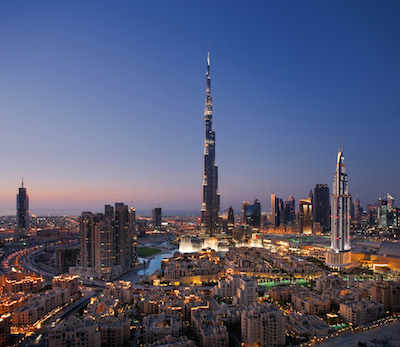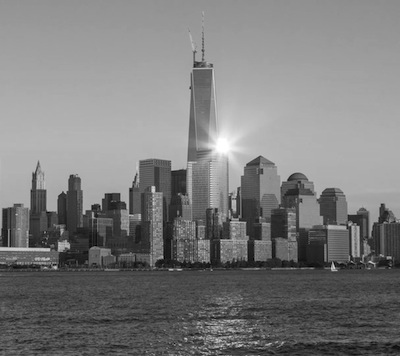 Image courtesy of Aventura Mall
Image courtesy of Aventura Mall
Political instability and evolving urban economies have propelled consumers into a landscape of uncertainty, making authenticity, convenience and experience all trends to watch, according to a new report from Euromonitor. The two most unpredictable unknowns in politics are whether U.S. President Donald Trump will turn campaign rhetoric into actual practice and how the United Kingdom’s Brexit vote will impact countries still in the European Union. Euromonitor’s “Global Economies and Consumers in 2017” white paper report suggests that New Consumerism will strongly influence behavior as individuals rethink personal priorities and values.
"Rapid urbanization in emerging markets is a major driver of new shopping malls and recreational activities," said Pavel Marceux, households specialist at Euromonitor
"'Brand centralization' is something that has been ongoing for a decade and more in most major emerging economies, such as China, India, Brazil, etc.," he said. "Luxury brands in particular are similarly looking to attract high-wealth settlers in capitals or even domestic tourists looking to purchase the novelty expensive 'legit' brands.
"However, brands with a savvy digital plan are also reaching out to second- and third-tier cities via ecommerce deliveries, either from their centralized stores or even via cross-border commerce. The growing understanding is that the new middle class is not confined to central cities, with smaller towns increasingly home to upwardly mobile and trend-conscious consumers wanting to jump on the international brand wagon.”
Where in the world Amid so much uncertainty, Euromonitor highlights that the U.S. is accountable for nearly every one in three dollars spent globally. The U.S. spending power and consumer behavior, especially during the Trump presidency, matter to the rest of world economy. Similarly, even though China’s economy has slowed, the country will see a large increase in consumer spending. While much is discussed about the U.S. and Chinese economies, emerging and developing economies will also witness strong growth in the year ahead. Euromonitor forecasts that emerging economies will grow by more than twice that of mature markets. The development of cities is needed for emerging markets to grow as urban areas have the largest share of economic growth. Many cities attribute GDP growth to economic and population growth, accordingly, some cities can achieve 40 to 70 percent more rapid growth than their countries. With major cities driving economic growth, sometimes more so than the entire country, the fastest growing metropolitan areas will be in the Middle East and Africa in 2017. Dubai, UAE skyline
For example, Abuja, Nigeria’s population is expected to grow by 4 percent in one year, and Doha, Qatar is likely to grow at 3 percent.
"The last 5 years have seen investment interest grow further in the Sub-Saharan Africa region, which could become a key battleground for the luxury goods industry in the short to medium term," said Fflur Roberts, head of luxury research at Euromonitor.
"Despite the numerous challenges to overcome in the region, other luxury brands are certain to follow the likes of Zegna, Hugo Boss and Porsche in opening new outlets in the Sub- Saharan Africa region," she said. "Prada, for example, has already confirmed plans to open in Angola. In order to succeed, brands will need to overcome these challenges through the careful research of suppliers, local partners, end consumers and the business environment."
Overall, the world’s urban population is growing at 2 percent every year, with some widely exceeding this rate. Booms in population are also being recorded in smaller cities, such as metropolitan Cairo, Egypt expected to grow by half a million people in 2017.
As the population increases in cities around the world so will the income levels of residents. Per Euromonitor’s report, three quarters of high-income households will live in major cities.
The average household incomes of many Latin American, Sub-Saharan and Asia Pacific countries are rising, opening opportunities for luxury to boost their presence in these markets.
In 2017, Euromonitor forecasts that there will be 101 million households with more than $100,000 in annual income. Our of these households, 74 percent will live in 1,150 cities.
Broken down by city, Buenos Aires, Argentina, will add an estimated 30,000 households with income above $100,000 while New York and San Francisco will add more than 100,000 high-income households.
Dubai, UAE skyline
For example, Abuja, Nigeria’s population is expected to grow by 4 percent in one year, and Doha, Qatar is likely to grow at 3 percent.
"The last 5 years have seen investment interest grow further in the Sub-Saharan Africa region, which could become a key battleground for the luxury goods industry in the short to medium term," said Fflur Roberts, head of luxury research at Euromonitor.
"Despite the numerous challenges to overcome in the region, other luxury brands are certain to follow the likes of Zegna, Hugo Boss and Porsche in opening new outlets in the Sub- Saharan Africa region," she said. "Prada, for example, has already confirmed plans to open in Angola. In order to succeed, brands will need to overcome these challenges through the careful research of suppliers, local partners, end consumers and the business environment."
Overall, the world’s urban population is growing at 2 percent every year, with some widely exceeding this rate. Booms in population are also being recorded in smaller cities, such as metropolitan Cairo, Egypt expected to grow by half a million people in 2017.
As the population increases in cities around the world so will the income levels of residents. Per Euromonitor’s report, three quarters of high-income households will live in major cities.
The average household incomes of many Latin American, Sub-Saharan and Asia Pacific countries are rising, opening opportunities for luxury to boost their presence in these markets.
In 2017, Euromonitor forecasts that there will be 101 million households with more than $100,000 in annual income. Our of these households, 74 percent will live in 1,150 cities.
Broken down by city, Buenos Aires, Argentina, will add an estimated 30,000 households with income above $100,000 while New York and San Francisco will add more than 100,000 high-income households.
 Image of New York, courtesy of Versace
Cities in the Middle East will remain as affluent hubs with Dubai, United Arab Emirates seeing high growth of high-income households.
New consumerism
Similar to how global cities will continue to evolve, consumers are becoming altered by technological advances. Smartphones have changed the way consumers buy products and services.
Digital consumer trends to watch in 2017 include new digital services that will propel digital commerce growth and apparel, which will drive product-based digital growth.
For luxury, these two points are important to consider when planning for the remainder of 2017.
Ecommerce is considered a bright spot amid luxury’s otherwise stagnant growth.
Across all regions, luxury ecommerce is growing at a faster rate than total sales, according to a senior analyst from Euromonitor International speaking at Luxury Interactive 2016 on Oct. 19.
Speaking on “Divergence in the Digital Landscape,” Ayako Homma noted that while the entire luxury market is expected to see a compound annual growth rate of 2 percent through 2021, luxury online sales are expected to rise at a CAGR of 7 percent in the same timeframe. To capture this growing piece of the luxury pie, brands will need to improve their omnichannel, ecommerce and mobile experiences (see story).
Euromonitor’s third trend to consider for 2017 is the expansion of bank-led mobile proximity payments.
Last year for example, French department store Printemps brought mobile pay into France’s luxury retail sector by introducing Alipay in stores which will work to entice Chinese consumers to shop its bricks-and-mortar locations.
A significant portion of France’s shoppers is made up of Chinese consumers who often spend throughout Europe, where it is cheaper for them. Printemps is hoping to corner that market by offering a mobile pay service already popularized in China (see story).
Image of New York, courtesy of Versace
Cities in the Middle East will remain as affluent hubs with Dubai, United Arab Emirates seeing high growth of high-income households.
New consumerism
Similar to how global cities will continue to evolve, consumers are becoming altered by technological advances. Smartphones have changed the way consumers buy products and services.
Digital consumer trends to watch in 2017 include new digital services that will propel digital commerce growth and apparel, which will drive product-based digital growth.
For luxury, these two points are important to consider when planning for the remainder of 2017.
Ecommerce is considered a bright spot amid luxury’s otherwise stagnant growth.
Across all regions, luxury ecommerce is growing at a faster rate than total sales, according to a senior analyst from Euromonitor International speaking at Luxury Interactive 2016 on Oct. 19.
Speaking on “Divergence in the Digital Landscape,” Ayako Homma noted that while the entire luxury market is expected to see a compound annual growth rate of 2 percent through 2021, luxury online sales are expected to rise at a CAGR of 7 percent in the same timeframe. To capture this growing piece of the luxury pie, brands will need to improve their omnichannel, ecommerce and mobile experiences (see story).
Euromonitor’s third trend to consider for 2017 is the expansion of bank-led mobile proximity payments.
Last year for example, French department store Printemps brought mobile pay into France’s luxury retail sector by introducing Alipay in stores which will work to entice Chinese consumers to shop its bricks-and-mortar locations.
A significant portion of France’s shoppers is made up of Chinese consumers who often spend throughout Europe, where it is cheaper for them. Printemps is hoping to corner that market by offering a mobile pay service already popularized in China (see story).
"There has been no shortage of hype around the potential for in-store mobile payments, and for good reason," said Michelle Evans, digital consumer manager at Euromonitor. "A mobile-enabled environment provides many benefits for players across this ecosystem.
"For traditional retailers, a mobile wallet has the potential to boost revenues and reduce operating costs," she said. "One of the most often cited benefits of in-person mobile payments for merchants is the ability to reduce costs by lowering fraud loss and/or payment processing fees.
"Two of the most often overlooked benefits would be the power of a mobile-enabled environment to enhance the customer experience and further the brand proposition.”
